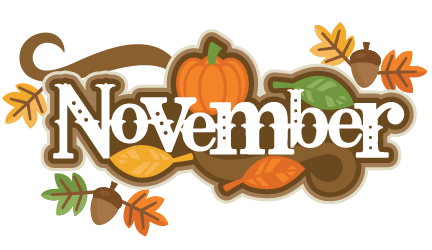Charlotte County Ostomy Support Group
October Newsletter
Website: www.ccosg.org
A 501 (C) (3) nonprofit organization, (tax-deductible donations)
Officers:
President: Jerry Downs………….942-629-7568…. . fldowns@embarqmail,com
Vice President: Ken Aukett……609-315-8155
Secretary: Lovelle Meester….941-637-8167
Treasurer: Lorelie Godbout….. 603-474-9063
Directors: Janice Creutzman….910-382-1509
David Sandora….941-828-107
Committees:
Newsletter: Lorelie Godbout
Programs & Education: Jerry Downs,
Gloria Patmore, RN (retired)……..941-627-9077,
Nancy Frank, RN, BSN, CWOCN ……………….941-629-5118,
Marie Michel RN, CWCA, CHRN, OMS……. 941-626-260T
Visitation: Nancy Frank, RN, BSN, CWOCN
Library: Lorelie Godbout, RN (retired)
Professional Advisors: John P. Rioux, MD, F.A.C.S.
Nancy Frank, RN, BSN, CWOCN
Marie Michel, RN, CWCA, CHRN, OMS
At our last meeting, President Jerry Downs announced that Bonnie Coker, our former Vice President, passed away on Sunday, November 10. She was hospitalized most of this past year. She had 34 surgeries since she was 18 and she couldn’t take it anymore. She was under hospice care at the end. I know she will be missed by many. Jerry and his wife Linda attended the Graveside service on Wednesday, November 13.
Charlotte County Ostomy Support Group Newsletter for November 2019
Our speaker for our November meeting was Paul Bixler, a representative from Hollister. He opened up his presentation announcing that they are here to help. His phrase “If it ain’t broke, don’t fix it” meaning that if a product works don’t change it. He discussed how many nurses have little knowledge of how to care for an ostomy. Hollister is available to help educate hospital medical staff to care for patients with stomas. The focus of Hollister in recent years has been the challenges of training patients and nurses.
In 2016 Hollister’s focus was to provide more research and study on complications of skincare. It was reported that 75% of patients experienced some type of skin issue and one in five seek help. The goal is to improve the quality of life for the patient. In 2017 the focus was more on the economic issue. Another study in January of 2018 showed that of 150 patients using the ceramide-infused Cera Plussin barrier, 75% were more satisfied with the skincare and less itching. A recent study TEWL (trans epidermal water loss) proved there was moisture loss around the stoma which appeared as shiny skin, meaning that the area stayed dry.
Mr. Bixler explained the importance of Hollister’s after care program and that over 80,000 patients have been introduced to the program and benefit from it. It provides support and answers to patients and nurses.
The newest product, soft convex barrier, provides convexity around the stoma and is available in one piece and soon coming in two piece. This is the Cera Plus skin barrier as mentioned above.
I found this article on the UOAA site and thought it may help with some issues people may have.
FIND SOLUTIONS TO PROBLEMS THAT AN OCCUR WITH AN OSTOMY
Many people with an ostomy find that once their stoma has settled and they are in a normal routine, they are able to live their life with few ostomy related issues. However, as you are adjusting to life with a stoma, you may experience some problems that are quite common. We have put together a list of some common ostomy related problems and solutions so you can be well prepared if and when they occur.
Many ostomates continue to live with stoma issues and problems unaware that there are solutions available to them. Learning how to care for your stoma and understanding these common problems will help to find normalcy and routine after your surgery. Access to this information will help you to take charge of your life and increase your confidence.
Before we go into the common problems and solutions, it might be helpful to mention proper cleaning and application. With proper care of your stoma and the skin around your stoma, you may reduce the risk of the below skin problems.
Proper care begins with proper application. Make sure your barrier hole fits tightly around your stoma, and that the skin is clean and dry for application. When removing your barrier, it is important to lift it gently off of your skin while using your other hand to press down on your skin. Ripping the adhesive off quickly can cause redness and irritation that can lead to problems. To clean your stoma and the area around it, use a soft cloth or towel and warm water. Be gentle when cleaning, as aggressive rubbing or wiping can irritate the skin. It is not necessary to use soaps, as soaps can leave residue and irritate the skin. When changing your pouching system, it can be helpful to use a small hand-held mirror to see all around it. If there is leakage, use the mirror to check all areas of your barrier and stoma for gaps and creases. Once you’ve identified the problem area, it will be easier to address.
Leakage
Two of the main factors of leakage problems are: how you prepare your skin before you apply your barrier, and your barrier size. You should make sure to clean and dry your skin completely before applying a new pouching system. If you are having trouble getting the area dry, an absorbing powder might be a good solution for you. If your pouch gets too heavy and tends to pull away from your skin, or if your barrier does not fit correctly, a protective seal between your stoma and barrier can prevent leakage and seal the pouching system.
Skin Problems
The skin that surrounds your stoma is called peristomal skin–it should be smooth and healthy and look like the rest of your skin. If it is red or irritated, you should address the problem immediately. If you have problems with adhesive residue or unable to get the area completely clean before application, you may want to use an adhesive remover.
Odor
New sound and smells coming from your pouching system can be embarrassing and induce anxiety. Many new pouching systems have filters to neutralize the odors caused by gasses in your pouch. What you eat can have an effect on gasses you produce. It is recommended to avoid carbonated beverages and limit high-fiber foods. If the filter in your pouch gets blocked, you may experience ballooning. Ballooning happens when air from your stoma cannot escape the bag and it fills up like a balloon. Depending on the type of system you are using, you may want to release air from it throughout the day. If the odor is strong when you are changing your pouch you may want to try a lubricating deodorant that can help mask the smells during a pouch change. Simply place 6-10 drops into the pouch when you change and empty it and spread it around inside the pouch by rubbing the inner sides together, avoiding the filter. This helps the output to make its way more easily to the bottom of the pouch.
Should you need more assistance dealing with a problem you are having with your ostomy consult your healthcare professional. For more assistance and personalized support, check out Coloplast(R) Care, which is an ongoing comprehensive support program that gives people with an ostomy throughout their life. Editor’s note: This article is from one of our digital sponsors, Coloplast. Sponsor support along with donations from readers like you help maintain our website and the free trusted resources of UOAA, a 501 (c) (3) nonprofit organization.
I found this article informative and helpful and I hope it can help others, especially new ostomates.
It was brought up at the meeting about nurses having little knowledge of how to care for an ostomy. Nine years ago there was a woman in our support group that was wheelchair bound with a guide dog. She had a Colostomy and just got a Urostomy. She ended up going to the ER for a problem with her Urostomy and no one wanted to deal with her. No one knew how to take care of a stoma. She was very upset. I think she finally got someone to help her, but it took a while. This problem has been an ongoing problem for a long time. If you go to the hospital for anything, make sure you bring your own supplies, because the hospitals don’t always have what you need. I had three occasions of staying in the hospital. The first time I had sepsis and was in the hospital for five days and couldn’t change my bag. The hospital supplied a drainage bag and my husband brought a connector from home and he connected it. I wasn’t able to change my bag while I was there and ended up wearing it for a total of seven days. I was lucky that it lasted that long.
HAPPY HANUKKAH, MERRY CHRISTMAS, AND HAPPY NEW YEAR
I just want to wish everyone a Happy Holiday Season. I always like to reflect over the past year and try to see where I made mistakes and where my strong points have been. I try to correct any mistakes or bad things I may have done and get rid of any negativity I may have. It is a daily battle, but at this time of year, I try to focus on all the good things and get rid of the bad. I have always loved Christmas and sometimes go overboard, but that is in my nature. I always try to see that there are so many people and situations that are a whole lot worse than what I am going through and that I am so thankful for what I have.




